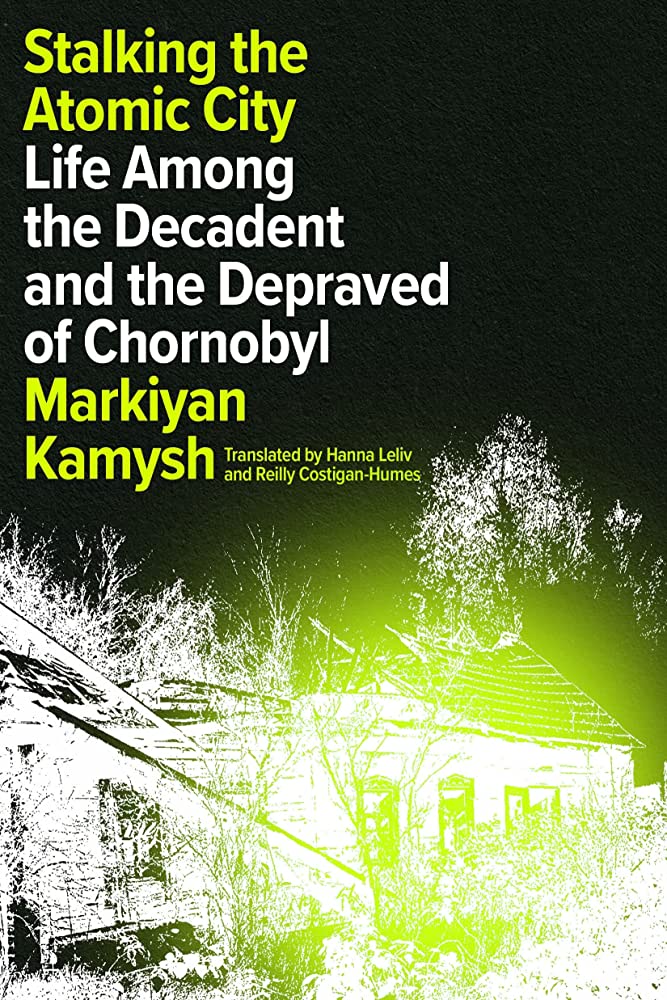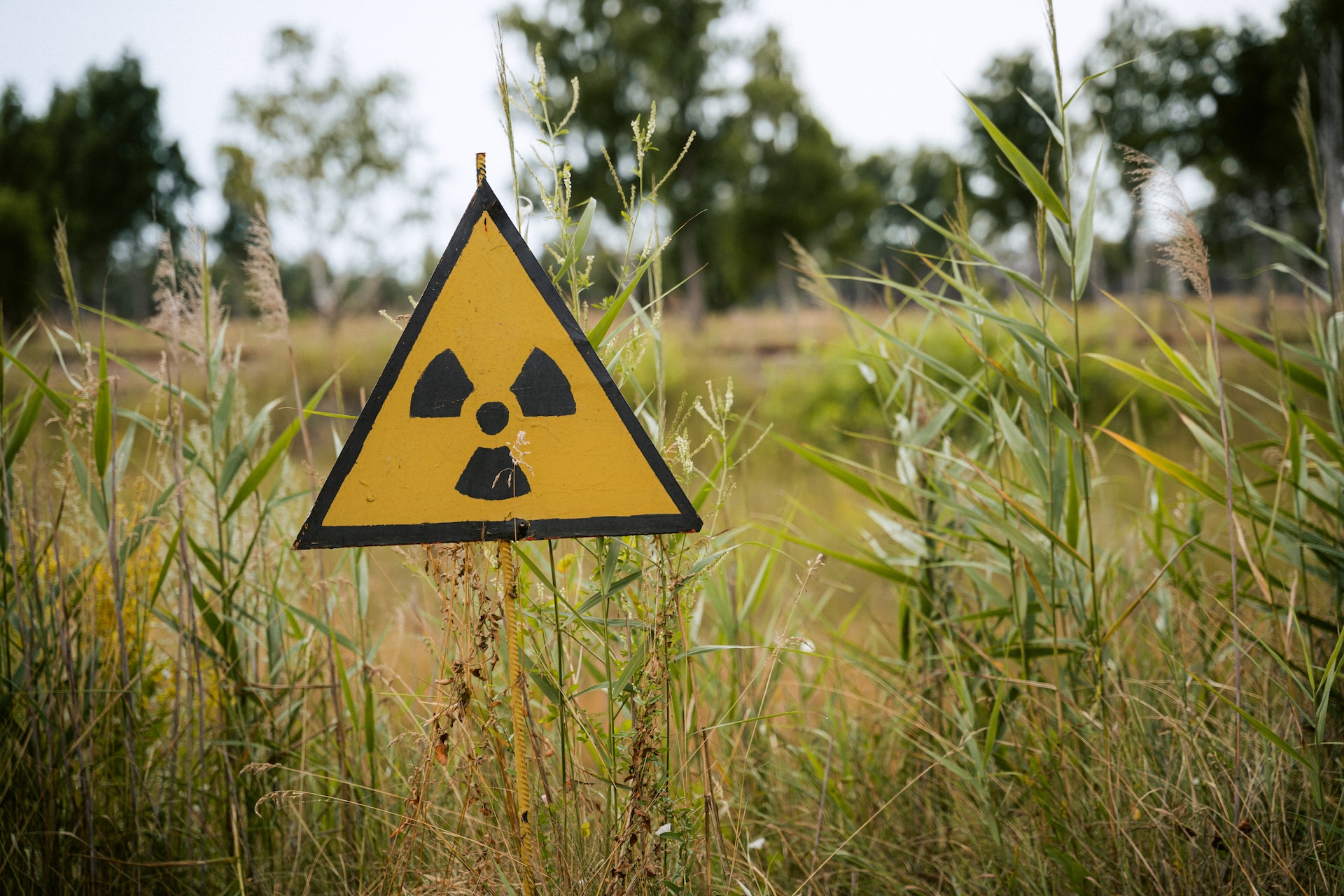by Nicole Yurcaba

For months, Russian shelling near the Zaporizhzhia Nuclear Power Plant in Zaporizhzhia Oblast, Ukraine, has sparked international concern that Ukraine could once again become the stage for a nuclear disaster. The concerns have grown given the 7 May evacuations of the area surrounding the Enerhodar nuclear facility. Concerns about the war’s implications in the region have reopened global conversations about the 1986 Chornobyl nuclear disaster–an event that much of the world may have forgotten but is still as relevant today for Ukrainians everywhere as it was when it first happened. Books like Adam Higginbotham’s Midnight in Chernobyl and Kate Brown’s Manual For Survival: A Chernobyl Guide to the Future capture and engage readers with academic, historical narratives that blend with personal interviews. However, they overlook a morbid fascination with the disaster that has created an underground business and established people like writer Markiyan Kamysh as unique authorities about the area frequently referred to as “the Zone.”
Kamysh’s connection to the Chornobyl zone is a unique one. His father was a Chornobyl liquidator as well as a civil engineer from the Nuclear Research Institute. In Stalking the Atomic City, Kamysh establishes himself as a “stalker,” one of the brave (or crazy, depending on how one views it) individuals who sneak into the Chornobyl Zone and hike, give illegal tours, escape arrest, fish, and return to the area time and time again despite the toxic dangers. Kamysh portrays the Zone as a tranquil place, one in which those seeking an escape from cities and hassles of everyday life can hike from abandoned village to abandoned village, drink freely from condemned wells, and smash out the windows in decrepit houses and apartments. He describes the Zone as a locus of personal freedom, one secretly inhabited by “the generation the same age as the explosion.” Many in this generation view the Zone as “a land of tranquility and frozen time” while others view it as “a horrible memory of their half-forgotten childhood.” Kamysh admits that he is one member of his generation for whom the Zone is a sacred place.
Stalking the Atomic City possesses a poesy which the American Transcendentalists would envy. Of course, it is a translated work, and its rendering comes courtesy of translators Hanna Leliv and Reilly Costigan-Humes (Costigan-Humes has translated the works of Ukrainian authors like Serhiy Zhadan). The poesy is most effective in the chapter “Hot, Tan, and Naked Winter.” Here, Kamysh critically and respectfully describes winter as a feminine force possessing “methodical destruction” which “lets you clutch the fluidity of time.” Winter “works the hardest” and “punches the wall tiles and scratches the faces of old Soviet murals.” Kamysh’s portrayal of winter’s erasure of Soviet artifacts echoes a long-held idea that the Chornobyl disaster was the Soviet Union’s unofficial fall.
Kamysh’s writings develop an Emersonian take regarding solitude. He writes, “Nothing is more pleasant than the feeling of solitude in the nighttime forest where fear no longer resides.” He acknowledges that part of the Zone’s beauty lies in its decrepitness: “Abandoned houses make normal people sad, yet they make people like me sleepy and peaceful.” He continues, “I’ve found peace here. The peace of a country house I don’t have.” The necessity of isolation, solitude, and aloneness in the Zone continues in “A New Year’s Eve Fairy Tale.” Kamysh admits that when one is ready for their first trip into the Zone, the individual should “go there alone.” He also asserts that the individual should “prepare as little as possible” because one will “face true alienation: treading unfamiliar paths and sinking into swamps without a compass or a map, looking up to see stars you know nothing about.” Kamysh’s points echo Emerson’s statement, “But the necessity for solitude is deeper than we have said, and is organic”—a philosophy from which modern society might benefit.
At times, Stalking the Atomic City offers readers a few insights about the necessity of solitude as part of the grief process. Kamysh offers poignant, beautiful reflections about his favorite abandoned church where he grieves the loss of his cat. In the church, Kamysh knows “The smoke will fly up to the sky; tears will drop onto the hardwood floor. The candle will burn out, and I’ll forget everything. Farewell.” His words ultimately transcend the page, and this thread continues through the book until its end. As the book concludes, the stalker-philosopher offers readers some meaningful insights about a life well lived: “We’ll smile at a life that challenges you and dictates where you should walk, how you should live, and what you should breathe. After all, we’re the children of our time. Where else could we be?” This type of nostalgia is a permanent feature in the book. Kamysh even longs for the Chornobyl which existed prior to the safe containment structure , and his nostalgia reinforces for readers how swiftly the area is changing despite the radioactive threat.
The radioactive threat plays only a minor role in Kamysh’s book. He briefly contemplates what the consequences of consuming water from radioactive lakes and wells might pose to him in the future. Unlike documentaries like The Babushkas of Chernobyl, Stalking the Atomic City does not examine the Zone with a scientific lens. In fact, readers will find very little science in the book, which makes Stalking the Atomic City a new type of Chornobyl witness literature. It is purely narrative and confessional.
Raw, visceral, and graphic, Stalking the Atomic City is a dystopian book that offers readers hope. It is about improvisation and adaptation in the face of a territory literally riddled with death. Kamysh’s writing is pure, sincere, and shocking and establishes Kamysh as an original voice in the Ukrainian literary scene.
Note: Like many Ukrainian artists and writers, Kamysh–as of June 2022–volunteered for the Ukrainian military in Ukraine’s fight against Russia’s current invasion. For more information about writers and artists who have volunteered, click here.
Nicole Yurcaba (Ukrainian: Нікола Юрцаба–Nikola Yurtsaba) is a Ukrainian (Hutsul/Lemko) American poet and essayist. Her poems and essays have appeared in The Atlanta Review, The Lindenwood Review, Whiskey Island, Raven Chronicles, West Trade Review, Appalachian Heritage, North of Oxford, and many other online and print journals. Nicole teaches poetry workshops for Southern New Hampshire University and is a guest book reviewer for Sage Cigarettes, Tupelo Quarterly, Colorado Review, and The Southern Review of Books.



Add your first comment to this post